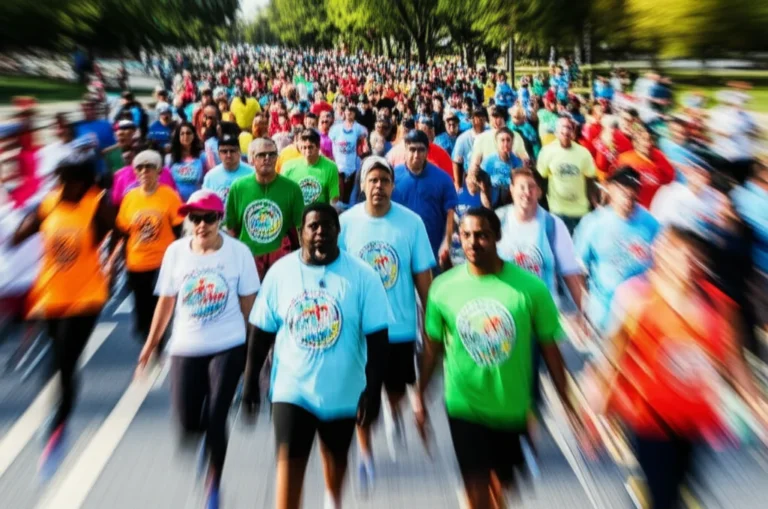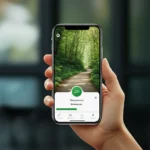Support our educational content for free when you purchase through links on our site. Learn more
How Many Miles Is a 5K Race? 🏃♂️ The Ultimate 2025 Guide
Ever found yourself wondering, “Exactly how many miles is a 5K race?” You’re not alone! Whether you’re gearing up for your first virtual walkathon with Walkathon Virtual™ or just curious about this popular race distance, the answer might surprise you — and it’s more than just a number. Did you know that a 5K is precisely 3.1 miles, but the experience, training, and community behind it make it so much bigger than that?
In this comprehensive guide, we’ll unravel everything you need to know about the 5K distance: from its fascinating history and why it’s the perfect starter race, to expert training tips, pacing strategies, gear recommendations, and even how to measure your own route accurately. Plus, we’ll explore the booming world of virtual 5Ks and how you can join global events from your own neighborhood. Ready to lace up and discover why a 5K might just be your next best adventure? Let’s dive in!
Key Takeaways
- A 5K race is exactly 3.1 miles (5 kilometers) — the perfect distance for beginners and seasoned runners alike.
- The 5K’s popularity stems from its accessibility, community spirit, and versatility, including virtual race options.
- Training programs like the Couch to 5K (C25K) help newcomers build stamina safely over 6-8 weeks.
- Proper gear such as Brooks Ghost 15 running shoes and hydration strategies can boost performance and comfort.
- Virtual 5Ks offer flexibility and global connection, while in-person races provide electric race-day energy.
- Measuring your route accurately with apps like MapMyRun or GPS watches ensures a fair and fun race experience.
👉 Shop Recommended Gear:
- Running Shoes: Brooks Ghost 15 on Amazon | ASICS Gel-Nimbus 25
- GPS Watches: Garmin Forerunner 55
- Electrolyte Tablets: Nuun Sport
Ready to start your 5K journey? Let’s get moving!
Table of Contents
- ⚡️ Quick Tips and Facts
- 🕰️ The Genesis of the 5K: A Brief History of This Popular Race Distance
- 📏 Unpacking the 5K: Exactly How Many Miles (and Kilometers!) Is It?
- 💖 Why a 5K? The Enduring Appeal of This Accessible Distance
- 🌱 Is a 5K a Good Distance for Beginners? Your First Step Towards Fitness!
- ⏱️ How Long Does It Take to Run a 5K? Setting Realistic Expectations
- 📊 What’s the Average 5K Time? Benchmarking Your Performance
- 🏃♀️ Getting Ready to Run Your First 5K: Essential Training Tips for Beginners
- 🍎💧 Fueling Your 5K Journey: Nutrition and Hydration Strategies for Optimal Performance
- 👟 Gear Up! Essential Equipment for Your 5K Race Day Success
- 🎉 Race Day Ready: What to Expect and How to Conquer Your 5K!
- 💨 Pacing Yourself: Strategies for a Strong 5K Finish Line Sprint
- 💪 Common 5K Challenges and How to Overcome Them
- 🩹 Injury Prevention for 5K Runners: Staying Healthy on the Pavement
- 🗺️ How to Measure a 5K Route Accurately: Ensuring Your Miles Count!
- 💻 Virtual 5Ks vs. In-Person Races: Which Running Experience is Right for You?
- ❤️🩹 The Health Benefits of Running 5Ks: More Than Just Miles!
- ✨ Celebrating Your Achievement: Post-Race Recovery and Reflection
- 🚀 The Next Step: What Comes After Your First 5K? Exploring Longer Distances
- 🤝 Finding Your Tribe: How to Join a Running Community or Club
- ✅ Conclusion
- 🔗 Recommended Links
- ❓ FAQ
- 📚 Reference Links
⚡️ Quick Tips and Facts
Welcome to the world of 5Ks! If you’ve ever wondered how many miles is a 5K race, you’re in the right place. Here’s the quick scoop from the Walkathon Virtual™ team:
- A 5K race is exactly 3.1 miles (5 kilometers) long.
- It’s a fantastic distance for beginners and seasoned runners alike.
- Average finish times vary widely: from under 18 minutes for elites to 45+ minutes for casual walkers.
- Training plans typically range from 6 to 8 weeks, with gradual run/walk intervals.
- You can walk, jog, or sprint — it’s all about your pace and goals!
- Proper shoes like Brooks Ghost 15 or ASICS Gel-Nimbus 25 can make a huge difference.
- Hydration and nutrition matter even for this “short” race.
- Virtual 5Ks let you join global events from your neighborhood or treadmill.
Want to dive deeper? Stick around — we’ll unpack everything from history to training secrets, gear, pacing, and beyond. Ready? Let’s lace up! 👟
🕰️ The Genesis of the 5K: A Brief History of This Popular Race Distance
Ever wondered why 5K races are so popular? The 5-kilometer distance has roots in the metric system’s rise in the 20th century and the growing global enthusiasm for running as a sport and fitness activity.
- The 5K gained traction as an accessible race distance—short enough to be approachable for beginners but long enough to challenge seasoned runners.
- It became a staple in community races, charity events, and school competitions worldwide.
- The rise of virtual races in the 2010s, including platforms like Walkathon Virtual™, expanded access globally.
- Today, 5Ks are often the first race for new runners and a popular choice for fundraising events.
The 5K is like the “gateway drug” of running — once you get a taste, you’re hooked! 🏃♂️💨
📏 Unpacking the 5K: Exactly How Many Miles (and Kilometers!) Is It?
Let’s get precise: a 5K race is 5 kilometers or 3.10686 miles. Most people round it to 3.1 miles for simplicity.
| Distance Type | Kilometers (km) | Miles (mi) | Equivalent Visual |
|---|---|---|---|
| 5K Race | 5 km | 3.1 mi | 45 laps around a baseball diamond |
| 10K Race | 10 km | 6.2 mi | Length of 91 football fields |
| Half Marathon | 21.1 km | 13.1 mi | 53 laps on a 400m track |
| Marathon | 42.2 km | 26.2 mi | 105 laps on a 400m track |
Knowing this helps you visualize your race and set realistic goals. For example, if you’ve ever walked around your local park and know the distance, you can estimate how many laps equal a 5K.
💖 Why a 5K? The Enduring Appeal of This Accessible Distance
Why do millions choose the 5K? Because it’s the perfect blend of challenge and accessibility:
- Beginner-friendly: No need to be an elite athlete. You can walk or jog it.
- Time-efficient: Most finish in under an hour, making it easy to fit into busy schedules.
- Community-driven: 5Ks often support charities, creating a feel-good vibe.
- Motivating: A tangible goal that’s achievable with consistent training.
- Versatile: You can run a 5K on roads, trails, or even virtually.
At Walkathon Virtual™, we love how 5Ks bring people together worldwide, whether you’re running solo or joining a global event.
🌱 Is a 5K a Good Distance for Beginners? Your First Step Towards Fitness!
Absolutely! A 5K is the ideal first race for beginners. Here’s why:
- It’s short enough to train for in a few weeks (6-8 weeks is typical).
- You can mix walking and running, gradually building stamina.
- It’s a confidence booster — crossing that finish line feels amazing!
- The risk of injury is lower compared to longer distances if you train smart.
- Many beginner-friendly programs exist, like the famous Couch to 5K (C25K) plan.
Our trainers at Walkathon Virtual™ often recommend the 5K as a gateway to a healthier lifestyle. It’s a manageable challenge that pays off big time.
⏱️ How Long Does It Take to Run a 5K? Setting Realistic Expectations
Wondering how long it takes to finish a 5K? It depends on your pace, fitness, and whether you run or walk.
| Pace (min/mile) | Estimated Finish Time | Who This Fits |
|---|---|---|
| 6:00 | 18:36 | Elite runners |
| 8:00 | 24:48 | Experienced runners |
| 10:00 | 31:00 | Average runners |
| 12:00 | 37:12 | Walk/run beginners |
| 15:00 | 46:30 | Walkers or casual joggers |
According to Verywell Fit, a good finishing time for many is under 25 minutes, but every finish is a victory. Your personal best is what counts!
📊 What’s the Average 5K Time? Benchmarking Your Performance
Average finish times vary by age, sex, and fitness level. Here’s a snapshot from Meteor.Run data:
| Age Group | Women Average Finish Time | Men Average Finish Time |
|---|---|---|
| 20-29 | 20:58 | 17:49 |
| 30-39 | 20:49 | 18:02 |
| 40-49 | 22:19 | 19:02 |
| 50-59 | 24:11 | 20:02 |
| 60-69 | 27:47 | 23:05 |
Remember, these are averages — your goal is to improve your own time, not necessarily to beat others.
🏃♀️ Getting Ready to Run Your First 5K: Essential Training Tips for Beginners
Training smart is key! Here’s how to prep for your 5K:
1. The Couch to 5K (C25K) Program: Your Go-To Guide!
- A popular 7- to 9-week plan that alternates walking and running.
- Builds endurance gradually to avoid injury.
- Recommended by Mayo Clinic.
- Apps like C25K® by Zen Labs make it easy to follow.
2. Building Endurance and Stamina: Beyond Just Running
- Incorporate brisk walking on off days.
- Gradually increase your run intervals.
- Use the “Magic Mile” test to find your race pace (run 1 mile fast, then adjust your 5K pace accordingly).
3. Incorporating Strength Training and Cross-Training for a Stronger You
- Add bodyweight exercises like squats and lunges to strengthen legs.
- Cross-train with cycling, swimming, or rowing to improve cardiovascular fitness without impact.
4. The Importance of Rest and Recovery: Don’t Skip It!
- Rest days prevent burnout and injuries.
- Stretching and foam rolling aid muscle recovery.
- Sleep is your secret weapon for progress.
🍎💧 Fueling Your 5K Journey: Nutrition and Hydration Strategies for Optimal Performance
Nutrition is often overlooked but crucial for your 5K success:
- Eat a balanced diet rich in complex carbs, lean proteins, and healthy fats.
- Hydrate well before, during, and after your runs.
- Avoid heavy meals 2-3 hours before race day.
- Consider a light snack like a banana or energy bar 30-60 minutes before running.
- Electrolyte drinks like Nuun Sport can help during longer training sessions.
Our Walkathon Virtual™ pros swear by proper fueling — it’s like premium gas for your engine! ⛽️
👟 Gear Up! Essential Equipment for Your 5K Race Day Success
The right gear can make or break your race day experience. Here’s what we recommend:
| Gear Item | Recommended Brands | Why It Matters |
|---|---|---|
| Running Shoes | Brooks Ghost 15, ASICS Gel-Nimbus 25, Nike Air Zoom Pegasus 40 | Cushioning, support, injury prevention |
| Moisture-Wicking Apparel | Under Armour, Nike Dri-FIT, Lululemon | Keeps you dry and comfortable |
| GPS Watch | Garmin Forerunner 55, Apple Watch Series 9 | Track pace and distance |
| Running Socks | Balega, Feetures, Swiftwick | Prevent blisters and chafing |
| Hydration Belt | Nathan, CamelBak | For longer training runs |
Pro tip: Break in your shoes well before race day to avoid blisters.
👉 CHECK PRICE on:
- Brooks Ghost 15: Amazon | Brooks Official
- ASICS Gel-Nimbus 25: Amazon | ASICS Official
- Garmin Forerunner 55: Amazon | Garmin Official
🎉 Race Day Ready: What to Expect and How to Conquer Your 5K!
Race day jitters? We’ve got your back. Here’s the lowdown:
1. Pre-Race Nerves and How to Tame Them
- It’s normal to feel anxious!
- Use deep breathing or visualization techniques.
- Review your race plan and gear checklist the night before.
2. The Starting Line Experience: Finding Your Groove
- Position yourself according to your pace to avoid congestion.
- Start slow and settle into your rhythm.
- Focus on your breathing and form.
3. Navigating the Course: Stay Focused and Hydrated
- Use landmarks or mile markers to pace yourself.
- Take water at aid stations if available.
- If walking, keep moving steadily to maintain momentum.
4. The Finish Line Feeling: Pure Elation!
- Sprint if you can — that final burst feels incredible!
- Celebrate your achievement, no matter your time.
- Grab water, stretch, and enjoy the post-race festivities.
💨 Pacing Yourself: Strategies for a Strong 5K Finish Line Sprint
Want to crush your 5K? Master pacing:
- Start conservatively — don’t burn out in the first mile.
- Use the “Magic Mile” test to find your ideal race pace.
- Break the race into segments: warm-up, steady middle, strong finish.
- Save energy for a final sprint in the last 0.2 miles.
Our Walkathon Virtual™ coaches swear by pacing apps like Runkeeper or Strava to monitor splits and keep you honest.
💪 Common 5K Challenges and How to Overcome Them
Every runner hits bumps in the road. Here’s how to tackle common 5K hurdles:
- Shin splints: Slow down, stretch calves, and wear supportive shoes.
- Side stitches: Breathe deeply and adjust your pace.
- Motivation dips: Join a running group or virtual event for accountability.
- Weather woes: Dress in layers and adapt your pace.
Remember, even the pros have bad days. Keep going, and you’ll get stronger!
🩹 Injury Prevention for 5K Runners: Staying Healthy on the Pavement
Avoiding injury is crucial for consistent progress:
- Warm up before every run with dynamic stretches.
- Cool down and stretch after running.
- Invest in quality running shoes and replace them every 300-500 miles.
- Listen to your body — rest if you feel pain.
- Cross-train to balance muscle groups and reduce overuse injuries.
Our team at Walkathon Virtual™ recommends consulting a physical therapist if pain persists.
🗺️ How to Measure a 5K Route Accurately: Ensuring Your Miles Count!
Planning your own 5K route? Accuracy is key:
- Use GPS running watches or smartphone apps like MapMyRun or Strava.
- Measure on flat, safe paths or sidewalks.
- Double-check with online tools like Google Maps Distance Calculator.
- Mark start and finish points clearly.
- If organizing a virtual run, provide participants with route options or measurement tips.
Accurate measurement ensures fairness and trust in your event — a must for virtual or in-person races!
💻 Virtual 5Ks vs. In-Person Races: Which Running Experience is Right for You?
Virtual 5Ks have exploded in popularity, especially with platforms like Walkathon Virtual™ leading the charge. Here’s a quick comparison:
| Aspect | Virtual 5K | In-Person 5K |
|---|---|---|
| Location | Anywhere you choose | Specific race venue |
| Flexibility | Run anytime within a window | Fixed race date and time |
| Social Interaction | Online community, virtual cheers | Live crowds, race day energy |
| Cost | Often lower, no travel expenses | Registration + travel + lodging |
| Motivation | Self-driven, virtual support groups | Race day adrenaline and competition |
Both have perks — virtual races offer convenience and global connection, while in-person races bring electric atmosphere and camaraderie.
❤️🩹 The Health Benefits of Running 5Ks: More Than Just Miles!
Running a 5K isn’t just about crossing a finish line — it’s a health game-changer:
- Improves cardiovascular fitness and lung capacity.
- Boosts mental health by reducing stress and anxiety.
- Helps with weight management and muscle toning.
- Enhances bone density and joint health.
- Builds discipline and goal-setting skills.
Our Walkathon Virtual™ health pros love seeing participants transform physically and mentally through 5K training.
✨ Celebrating Your Achievement: Post-Race Recovery and Reflection
After the race, treat yourself right:
- Cool down with gentle walking and stretching.
- Rehydrate and refuel with protein and carbs.
- Reflect on your journey — celebrate every step and milestone.
- Share your success with friends, family, or your virtual running community.
- Plan your next goal to keep the momentum going!
Remember, every 5K finish is a victory worth savoring. 🎉
🚀 The Next Step: What Comes After Your First 5K? Exploring Longer Distances
Feeling pumped after your 5K? Why stop there?
- Try a 10K (6.2 miles) to build endurance.
- Explore half marathons (13.1 miles) for a bigger challenge.
- Join relay races or themed fun runs for variety.
- Keep training with Walkathon Virtual™ events to stay motivated.
Each new distance is a fresh adventure — and we’re here to guide you every step of the way.
🤝 Finding Your Tribe: How to Join a Running Community or Club
Running solo is great, but joining a community can supercharge your progress:
- Look for local running clubs or groups on Meetup or Facebook.
- Join virtual communities like Walkathon Virtual™ for global connection.
- Participate in group training sessions or charity runs.
- Share tips, celebrate milestones, and stay accountable together.
Running is better with friends — find your tribe and run happy! 🏃♀️🏃♂️
✅ Conclusion
So, how many miles is a 5K race? The short answer: 3.1 miles — a distance that’s both approachable and rewarding for runners and walkers of all levels. From its humble origins as a community-friendly race to the thriving global virtual events we love today, the 5K remains a perfect blend of challenge, fun, and fitness.
Whether you’re lacing up your Brooks Ghost 15s for your first run or joining a worldwide virtual walkathon with Walkathon Virtual™, the 5K offers a gateway to a healthier lifestyle and a vibrant community. Remember, it’s not about speed but progress — every step counts!
If you’re just starting out, consider following a proven training plan like the Couch to 5K program, fuel your body wisely, and invest in quality gear. And don’t forget to celebrate your finish line moments — they’re the fuel for your next adventure, whether that’s a 10K, half marathon, or another virtual event.
Ready to take the plunge? Your 5K journey awaits — and we’ll be cheering you on every step of the way! 🎉👟
🔗 Recommended Links
👉 Shop Running Shoes & Gear:
- Brooks Ghost 15: Amazon | Brooks Official Website
- ASICS Gel-Nimbus 25: Amazon | ASICS Official Website
- Garmin Forerunner 55 GPS Watch: Amazon | Garmin Official Website
- Nuun Sport Electrolyte Tablets: Amazon | Nuun Official Website
Recommended Books for 5K Training & Motivation:
- “The Couch to 5K Running Plan” by Josh Clark — Amazon Link
- “Run Your First 5K: A Beginner’s Guide” by Jeff Galloway — Amazon Link
- “Born to Run” by Christopher McDougall — Amazon Link
❓ FAQ
What is the average time to complete a 5K walk?
The average time for a 5K walk varies depending on fitness and pace but typically ranges from 45 to 60 minutes. Walking at a moderate pace of about 15-20 minutes per mile results in a finish time around 46 to 60 minutes. For beginners or those walking for charity events, the focus is on enjoyment and completion rather than speed. Walking a 5K is an excellent low-impact exercise that promotes cardiovascular health and endurance.
How do I prepare for my first virtual 5K walkathon?
Preparing for a virtual 5K walkathon involves a few key steps:
- Plan your route: Choose a safe, measured path or treadmill session. Use apps like MapMyRun or Strava to track distance.
- Train gradually: Follow a walk/run training plan over 4-6 weeks to build stamina.
- Gear up: Wear comfortable walking shoes like Brooks Ghost 15 or ASICS Gel-Nimbus 25 and moisture-wicking clothes.
- Stay connected: Join online communities such as Walkathon Virtual™ to share progress and stay motivated.
- Hydrate and fuel: Drink water before, during, and after your walk, and eat balanced meals to support your energy levels.
Virtual events offer flexibility—you can complete your walk anytime within the event window, making it easy to fit into your schedule.
Can you walk a 5K race or do you have to run?
✅ You can absolutely walk a 5K! Many participants choose to walk, jog, or mix both. The 5K distance is designed to be inclusive, welcoming all fitness levels. Walking a 5K provides excellent cardiovascular benefits and is a fantastic way to get active without the impact of running. Many charity and community races encourage walkers, and some even have special categories for walking participants.
What are the benefits of participating in a virtual 5K walkathon for charity?
Participating in a virtual 5K walkathon for charity offers multiple benefits:
- Flexibility: Complete your walk anytime and anywhere within the event period.
- Community: Connect with a global network of participants supporting a cause.
- Motivation: Fundraising and shared goals boost commitment and accountability.
- Health: Regular training improves physical and mental well-being.
- Impact: Your participation helps raise funds and awareness for important causes.
Virtual events remove barriers like travel and scheduling conflicts, making charitable giving and fitness accessible to all.
How do I accurately measure my 5K route for a virtual event?
To measure your 5K route accurately:
- Use GPS-enabled devices like Garmin Forerunner 55 or smartphone apps such as MapMyRun or Strava.
- Plan your route on flat, safe terrain with minimal traffic.
- Double-check distance using online tools like Google Maps Distance Calculator.
- Mark clear start and finish points.
Accurate measurement ensures your virtual race results are valid and comparable.
📚 Reference Links
- Mayo Clinic: 5K Run Overview and Training
- Verywell Fit: How Long Will It Take Me to Run a 5K?
- BODi: How Many Miles Is a 5K?
- Brooks Running: Brooks Ghost 15
- ASICS: Gel-Nimbus 25
- Garmin: Forerunner 55
- Nuun: Nuun Sport Electrolyte Tablets
- Amazon: Couch to 5K Running Plan Books
- Walkathon Virtual™: How to Organize Your Virtual Run: 10 Essential Tips!
Ready to start your 5K journey? Whether you’re walking, running, or virtually racing, every step is a victory. Let’s get moving! 🚀👟





